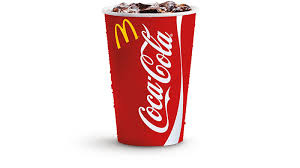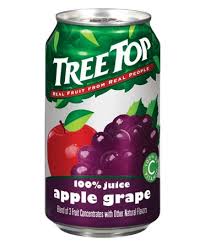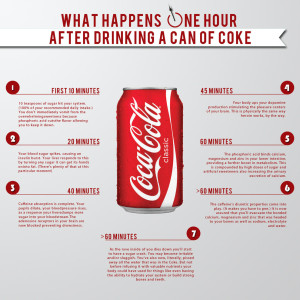Oh the Infographic about Coke – it was compelling – it was entertaining – it was wrong
Sugar in Coke
The first comment – the 10 teaspoons of sugar, 100% of your daily intake. Well yes, there are about 44 grams of sugar in coke, and the American Heart Association recommends a daily intake not to exceed 36 grams for men.
Does that much sugar make you vomit were it not for the phosphorus? Nope.Consider Tree-Top Apple Grape Juice with more sugar than coke and yet no phosphoric acid. Does it make you vomit? Nope. Many candy bars have more sugar, like a Mars bar – and they don’t make you vomit. Ever see a kid on Halloween night – they don’t vomit.
Insulin Spike in 20 minutes turning sugar into fat – wrong
Basic mistake made by many. Glucose when confronted by insulin typically turns into glycogen. But lets see what happens to the “sugar” or high-fructose corn syrup is that the glucose and the fructose are separated. The glucose hits the small bowel and your body quickly gobbles it up. The fructose isn’t quickly gobbled up because your body has no way to use fructose as an energy source.
Fructose does not spike insulin, but it does have some devastating effects on the body. I wrote about this before in the blog High Fructose Corn Syrup: Health Risks.
But the insulin does more than just allow you to save and utilize glucose. Insulin stops you from burning fat cells (lipolysis) and facilitates storage of fat. That burger you ate with the coke, the insulin facilitates the storage of the fat and proteins in that burger.
Caffeine and Coke
The next series has to do with the effects of caffeine and coke. In a can of coke there are 39 milligrams of caffeine but in the cup of coffee you drink there has between 80 and 125 milligrams of caffeine. Tea has between 15 and 70 mg of caffeine.
Caffeine does not stimulate the production of dopamine. It can enhance its effect. But you get more from a cup of coffee or a strong cup of tea.
Phosphorus Binding
What happens in a lab does not happen in the body. In this case a study looking at the effect of colas on bone density showed that there was no impact on soft drinks containing phosphorus on the binding of calcium. Some felt that the effect seen on bone density on those who drank colas was due to not drinking milk.
Dehydration – not
The cola does not dehydrate you – in fact you have a net positive in terms of fluid in your body. Of the 12 ounces of liquid in the cola you will be up more than about 11.5 ounces.
Sugar rush – nope
You will have plenty of sugar stored after you drink your cola. Will you get a sugar crush from the sugar rush? No evidence of this at all. So with the increase glucose your insulin stored, it can now get it out of storage.
Is coke a healthy drink? No, it is a recreational. It won’t leave you worse off than before you drank it, but it won’t be as devastating as the infographic portrays.
I don’t recommend drinking colas – you don’t need that much sugar.
After drinking coke you will:
Have some more stored energy with glucose (about half the calories in coke are stored in a nice manner). The other fructose, in some people, can be metabolized into fat, but in most it won’t have that effect.
You will have more fluid than before, that is- you will be more hydrated than before you drank the coke.
The caffeine – might wake you up a bit, not as much as a cup of coffee though.
You won’t be depleted of calcium.
In terms of the acid- the stomach has far more powerful acids in it- the coke is diluting the stomach acid.
REFERENCES:
Barger-Lux, M. J.; Heaney, R. P.; Stegman, M. R. (1990). “Effects of moderate caffeine intake on the calcium economy of premenopausal women”. The American journal of clinical nutrition 52 (4): 722–725. PMID 2403065



